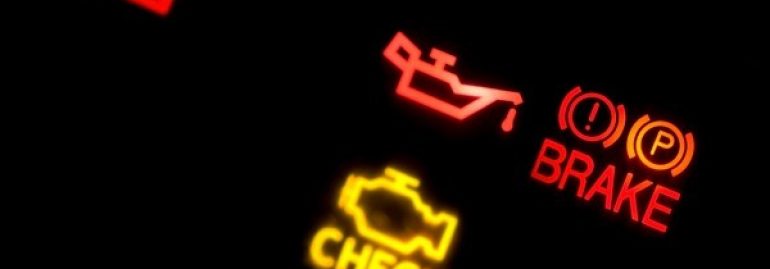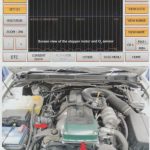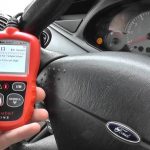If you are wondering what the different p0 codes on your car mean, you can check out our article below. These codes are general and cover many aspects. Here, we’ll look at some of the most common. The meaning of each code is explained so you can figure out what is going on with your car. And don’t worry – we’ve also got the list of p1 codes for you. These codes may be difficult to understand unless you know what you’re looking for, but don’t worry, we’ve got you covered.
OBD2 codes
OBD2 fault codes are used to troubleshoot car problems. They are letters and numbers that tell you the problem of a particular part of the engine. A scan tool is required to obtain this information. The first numeric digit indicates the code type. The next two digits are related to specific vehicle systems. The last two digits specify the fault designation. OBD2 codes can be confusing, so it’s a good idea to consult a professional if you’re unsure what the code means.
Some OBD codes are generic, while others are specific to a particular car model. This means that there are more than 3k generic OBD codes. The list is available in the driver’s manual, but you can also look up each code using your OBD tool. The explanations are helpful too. These codes can also be found online. These resources will help you diagnose a vehicle problem and determine the proper course of action.
OBD2 fault codes are the result of a malfunction in a vehicle’s on-board computer. The codes are meant to guide a mechanic to the exact location of a problem in the car. They will also appear on the dashboard as warning lights. The trouble codes are categorized in subcategories based on their type and severity. You can search for these codes by car brand or by model year.
Some of the codes are manufacturer-specific. However, there are also some OBD2 codes available on manufacturer-specific websites. In such cases, you may need to research them online to find out what they mean. If you have a wired hand-held scanner, you can print the page. This will generate a PDF that displays the OBD2 codes. In case you need to diagnose a fault code, the website will help you find the exact problem.
Common p0 codes
If you’re experiencing problems with your vehicle, you may have noticed that it’s displaying “common p0 codes.” These trouble codes are generated by the computer and indicate issues with your vehicle’s powertrain, ignition, or mass air flow sensor. There are a few ways to identify these codes and determine which of them your vehicle is experiencing. By following these tips, you can quickly determine which problem is causing the code.
Initially, the P0128 code indicates that the engine’s coolant temperature is below the thermostat’s temperature regulating range. The code is not manufacturer specific and is standardized according to the SAE definitions. This means that the problem lies within the fuel and air metering subsystem. Once you determine which one is the culprit, you can then determine the best course of action for your car. To fix this problem, you can follow the steps below.
Meaning of p0 codes
Generally speaking, the first digit of a P0 code is a generic one, and the second digit indicates a manufacturer-specific code. P0 codes refer to powertrain issues, and codes that start with P1 are manufacturer-specific. For example, “1” indicates a problem with the fuel or air metering system, or a mass air flow sensor. While most P0 codes are not manufacturer-specific, it is useful to understand what they mean.
A car’s diagnostic trouble codes are generally classified by their first digit. Generally, codes beginning with a 0 are considered generic or global codes, which means they are adopted by almost all cars that follow the OBD2 standard. This means that the code is the same for most manufacturers, but has a unique meaning for each brand. Manufacturer-specific codes are more specific to the brand and model of the car. Therefore, you will need to familiarize yourself with the meaning of a code before you attempt to fix it yourself.
Meaning of p1 codes
Diagnostic trouble codes are defined by their first digit, which can be either a two or a three. A two or three means that the code pertains to the powertrain, while a one means that it is specific to the chassis. The first digit of a trouble code tells you whether it is generic or a manufacturer specific code. The rest of the digits are used for various purposes. Typically, the code indicates that a certain component of the car is faulty, but there may be several causes for this.
In most cases, a P1 code means that the bottom tray is full or is draining. If your device shows this code, the issue is with the bottom tray. Usually, it will defrost before the error code disappears, but this rarely happens. Therefore, it is best to wait until the unit has defrosted before calling it a “Dry” code. If the bottom tray is full or if it’s draining slowly, you should immediately turn off the unit to avoid further inconvenience.
Another cause of a P1 error code is that the voltage level has become abnormal. Make sure the power supply is connected properly and that there are no loose connections. If the problem is still not resolved, try calling HomeX virtual experts to assess the issue for free. These professionals can assess the issue and suggest solutions that will resolve it. These virtual experts are ready to help you with any issue in your home. You can call them any time to get your questions answered.
Meaning of manufacturer-specific p0 codes
If your car is emitting a P0 code, it is important to understand what it means. This trouble code is assigned to various systems in the car. Some are related to the powertrain, while others are not. These types of codes will illuminate the Check Engine Light on your vehicle. They can also be categorized as chassis, body, or network codes. For these, you should consult a professional car mechanic.
The first number in a code represents the manufacturer. Codes beginning with “P” indicate a general issue, while P0a, p0b, and p0c are manufacturer-specific. The second digit indicates the type of problem. The code indicates whether the problem is related to the powertrain or another system. When a P0 code indicates a misfiring engine, the problem can be a spark plug wire or a crankshaft position sensor. A professional mechanic should be consulted to determine whether the code is associated with this issue.
P0 codes are manufacturer-specific, and are often generated for vehicles with OBD-II systems. They are generic codes for most problems, but some manufacturers have added their own codes. Hence, when you see the P0 code, you will have to use the service manual to properly diagnose the problem. You can also use the service manual or a professional OBD2 software to interpret codes. The OBD-2 standard defines the codes and allows manufacturers to add additional manufacturer-specific ones.
There are many manufacturer-specific p0 codes in a vehicle’s diagnostic computer. The first two digits of the code indicate a general issue with the powertrain. The last two digits, corresponding to the cylinder number, indicate a more specific issue. If the problem is power-related, you may need to make sure to fix the transmission. But if it’s a generic code, it could simply mean that a sensor has failed.







P0300. On fault code..what is it
04 Toyota sienna starts but Imideiatly engine dies.